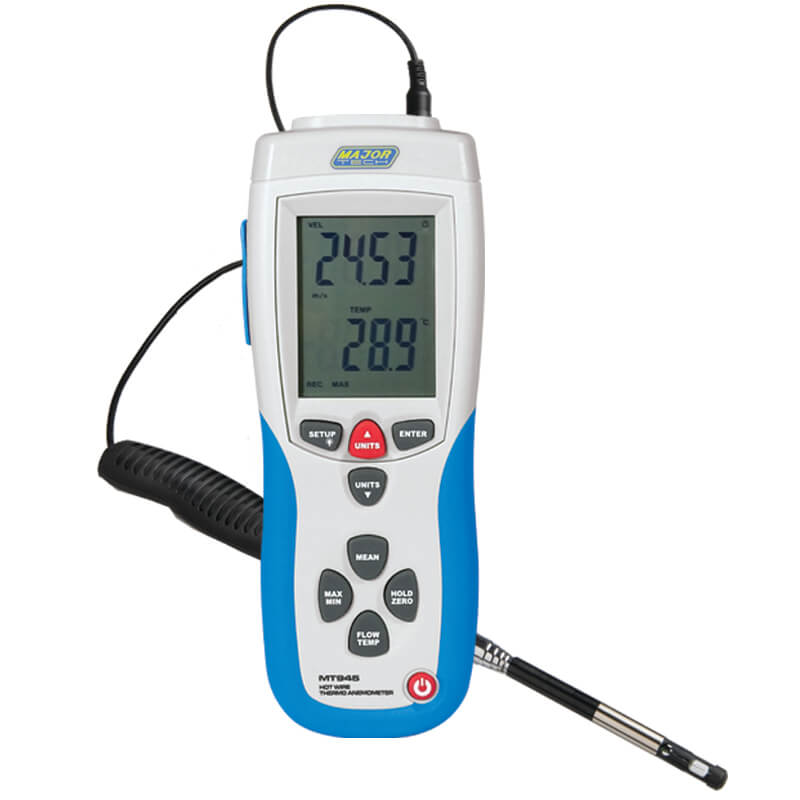Top Attributes to Seek in an Efficient Anemometer for Accurate Wind Measurement
Top Attributes to Seek in an Efficient Anemometer for Accurate Wind Measurement
Blog Article
All You Required to Learn About Anemometers: Just How They Work, Why They Matter, and Where to Use Them
Anemometers, though usually neglected in the world of clinical instruments, play a crucial role in various fields, offering useful understandings into wind speed and air flow patterns. As we dig right into the details of anemometer technology, we will discover the internal functions of these gadgets, their significance, and the key considerations when choosing the best anemometer for details applications.

Anemometer Fundamentals
A crucial instrument used to determine wind speed and instructions, the anemometer plays a critical function in weather forecasting and various sectors. An anemometer usually consists of 3 or 4 mugs that turn in the wind, a vane that points right into the wind, and sensors to track the turnings or movements.
There are different kinds of anemometers readily available, including mug anemometers, vane anemometers, hot-wire anemometers, and sonic anemometers, each with its special features and applications. Mug anemometers are typically used for standard wind speed measurements, while vane anemometers are preferred for directional dimensions. Hot-wire anemometers appropriate for low airspeeds, and sonic anemometers are ideal for high-precision dimensions in research and industrial setups. Comprehending the fundamentals of anemometers is important for precise wind information collection and evaluation across various industries.
Concepts of Anemometer Operation
Structure on the foundational understanding of anemometer fundamentals, the concepts of anemometer procedure illuminate the auto mechanics behind wind speed and direction dimensions. Cup anemometers, for instance, have three or even more cups that record the wind, causing them to rotate much faster as the wind speed rises. Hot-wire anemometers depend on a heated cable that cools down as wind passes over it, with the rate of cooling identifying the wind rate.
Value of Anemometers
The significance of anemometers in meteorology and various sectors can not be overstated. Anemometers play an essential duty in determining wind rate and instructions, supplying vital data for climate forecasting, climate researches, ecological monitoring, and air travel operations. Meteorologists count on anemometers to collect exact wind data, aiding them recognize climate patterns, predict storms, and problem timely cautions to the general public. In industries such as building and construction, farming, renewable resource, and maritime operations, anemometers are made use of to optimize processes, ensure safety and security, and raise performance. As an example, wind farm operators utilize anemometers to examine wind conditions and take full advantage of electricity production from wind generators. In the maritime field, anemometers aid ship navigation by offering real-time wind details to captains, helping them make informed decisions to make sure risk-free trips. Overall, anemometers are important tools that contribute dramatically to safety and security, efficiency, and informed decision-making in meteorology and a large range of sectors.
Applications Across Numerous Industries
Applications of anemometers extend across varied markets, showcasing their flexibility and energy beyond meteorology. In the renewable resource market, anemometers play a critical role in assessing wind conditions for wind ranch placements, guaranteeing optimal energy manufacturing. Industries like building and mining utilize anemometers to check wind rates, vital for safety protocols, especially when functioning at heights or in open-pit mines where strong winds can position hazards. Anemometers are likewise integral in the air travel link industry, assisting pilots in comprehending airspeed and wind instructions for safe take-offs and landings. The maritime market benefits from anemometers for ship navigation, aiding seafarers expect weather modifications and readjust paths as necessary. In agriculture, anemometers assist farmers in taking care of crop spraying by supplying real-time information article on wind rate to stay clear of drift. Anemometers find applications in Heating and cooling systems to maximize air movement and boost power efficiency in buildings. The diverse use instances of anemometers emphasize their relevance throughout various industries, highlighting their essential function in boosting functional safety and security and effectiveness (anemometer).

Picking the Right Anemometer for Your Needs
Selecting the appropriate anemometer customized to your specific demands is important for obtaining exact wind rate and instructions measurements. When selecting an anemometer, think about aspects such as the desired application, required dimension array, ecological problems, and preferred attributes. For basic objectives, a mug anemometer appropriates for gauging wind rate, while a vane anemometer provides wind instructions information. Hot-wire anemometers are optimal for reduced airspeed learn the facts here now measurements, and ultrasonic anemometers offer high accuracy and toughness.

Final Thought
In final thought, anemometers play a vital function in measuring wind rate and direction throughout numerous markets. Recognizing the concepts of anemometer operation is important for picking the ideal gadget for particular needs. From meteorology to aeronautics, anemometers are important tools for collecting precise data and making certain security in various applications. When choosing the most ideal tool for measuring wind conditions., it is vital to think about the value of anemometers in order to make informed choices.
There are different types of anemometers offered, consisting of cup anemometers, vane anemometers, hot-wire anemometers, and sonic anemometers, each with its special attributes and applications. Cup anemometers are typically made use of for standard wind speed measurements, while vane anemometers are liked for directional dimensions. Hot-wire anemometers are ideal for reduced airspeeds, and sonic anemometers are ideal for high-precision measurements in research study and industrial setups.Structure on the fundamental understanding of anemometer basics, the principles of anemometer operation elucidate the auto mechanics behind wind speed and instructions measurements. For general functions, a mug anemometer is ideal for determining wind speed, while a vane anemometer provides wind direction data.
Report this page